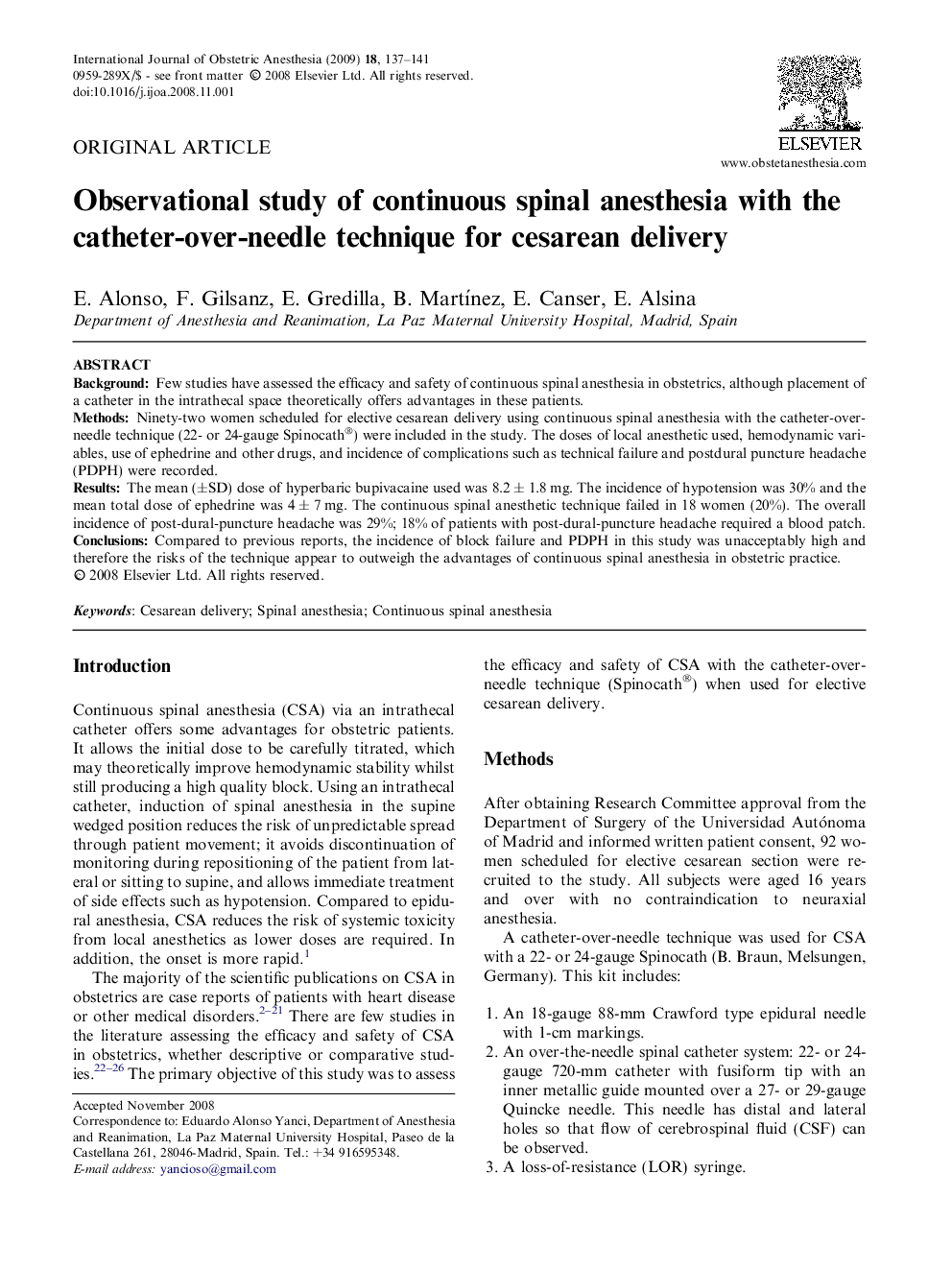| Article ID | Journal | Published Year | Pages | File Type |
|---|---|---|---|---|
| 2758525 | International Journal of Obstetric Anesthesia | 2009 | 5 Pages |
BackgroundFew studies have assessed the efficacy and safety of continuous spinal anesthesia in obstetrics, although placement of a catheter in the intrathecal space theoretically offers advantages in these patients.MethodsNinety-two women scheduled for elective cesarean delivery using continuous spinal anesthesia with the catheter-over-needle technique (22- or 24-gauge Spinocath®) were included in the study. The doses of local anesthetic used, hemodynamic variables, use of ephedrine and other drugs, and incidence of complications such as technical failure and postdural puncture headache (PDPH) were recorded.ResultsThe mean (±SD) dose of hyperbaric bupivacaine used was 8.2 ± 1.8 mg. The incidence of hypotension was 30% and the mean total dose of ephedrine was 4 ± 7 mg. The continuous spinal anesthetic technique failed in 18 women (20%). The overall incidence of post-dural-puncture headache was 29%; 18% of patients with post-dural-puncture headache required a blood patch.ConclusionsCompared to previous reports, the incidence of block failure and PDPH in this study was unacceptably high and therefore the risks of the technique appear to outweigh the advantages of continuous spinal anesthesia in obstetric practice.
